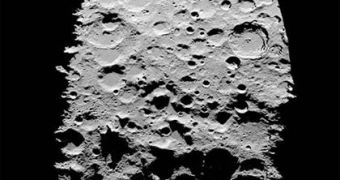Junichi Haruyama and his team from the Japan Aerospace Exploration Agency have analyzed the data sent back by the KAGUYA (“SELENE”) explorer satellite currently orbiting the Moon. The photos of a lunar crater found on the side permanently shrouded in darkness have shed some light – unfortunately, only metaphorically – on the non-presence of ice in the formation. Researchers have long since argued on the fact that such a cold, dark, hydrogen-full place could provide a proper environment for ice formation.
The presence of water-ice on our natural satellite is a very important condition that influences the development of future manned missions and possible colonization, since oxygen would be used for breathing purposes, while hydrogen would serve for terraformation and fueling. The hopes to find ice on the lunar surface were sparkled by the previous scans of the Moon's surface, performed by Pentagon's Clementine lunar orbiter in 1994, which collected data that indicated that there was such a probability, as well as by NASA's Lunar Prospector that depicted a clear hydrogen signal between 1998 and 1999.
The sunlit half of the Moon is out of the question in this regard, so that hopes were channeled towards the night-side, with a particular focus on the Shackleton crater, a formation 13 miles (21 km) in diameter and 2.5 miles (4 km) in depth, which is almost entirely covered in darkness. KAGUYA's images were based on enhancing the little sunlight reflected from the crater walls, which do receive it, and on analyses of the surface reflectance. Although not 100% accurate, they indicate that there's a high probability that there's no watery ice at the location, only soil.
Still, if any, it is in a very small amount and most likely mixed with lunar soil. The area's temperatures (-297 degrees Fahrenheit, or -183 degrees Celsius) are certainly a proper factor that would allow the crater to contain ice. Future, closer observations that are currently being prepared will clarify this matter for good.

 14 DAY TRIAL //
14 DAY TRIAL //